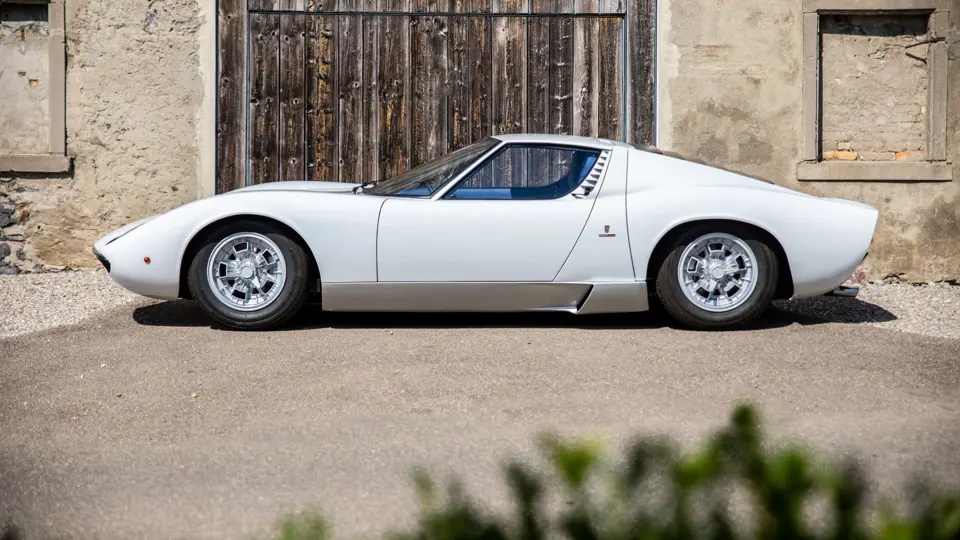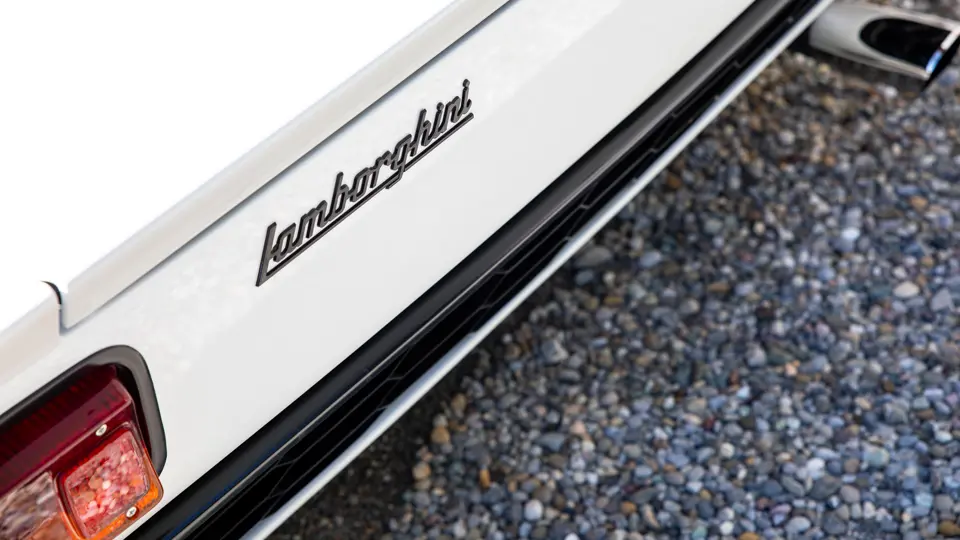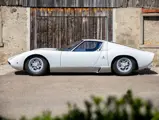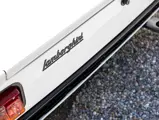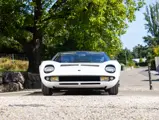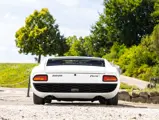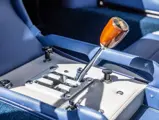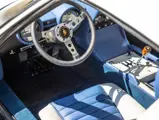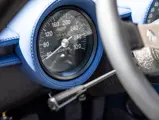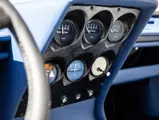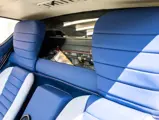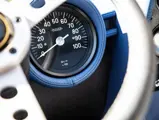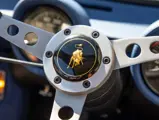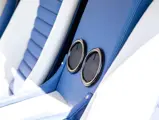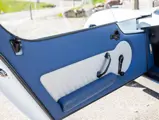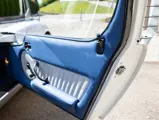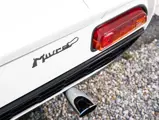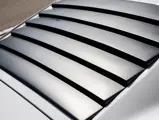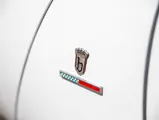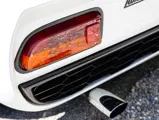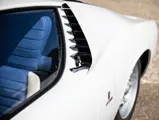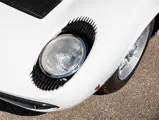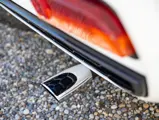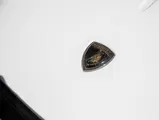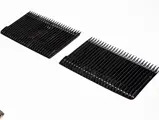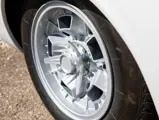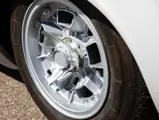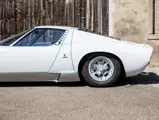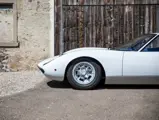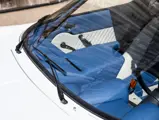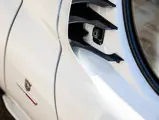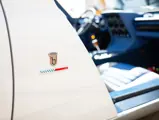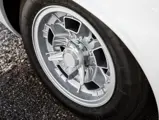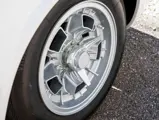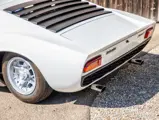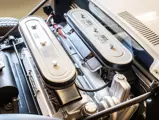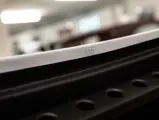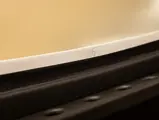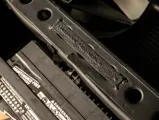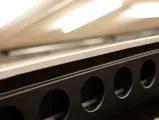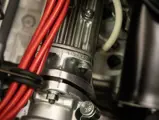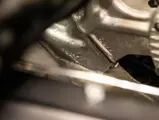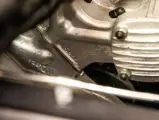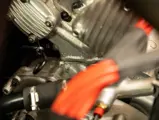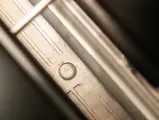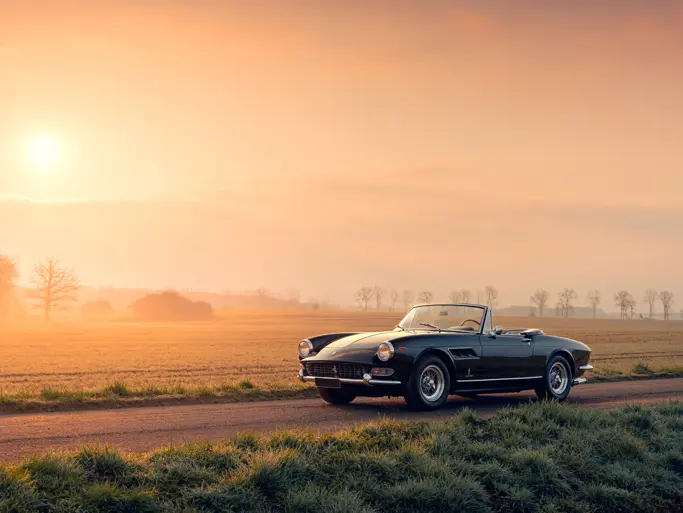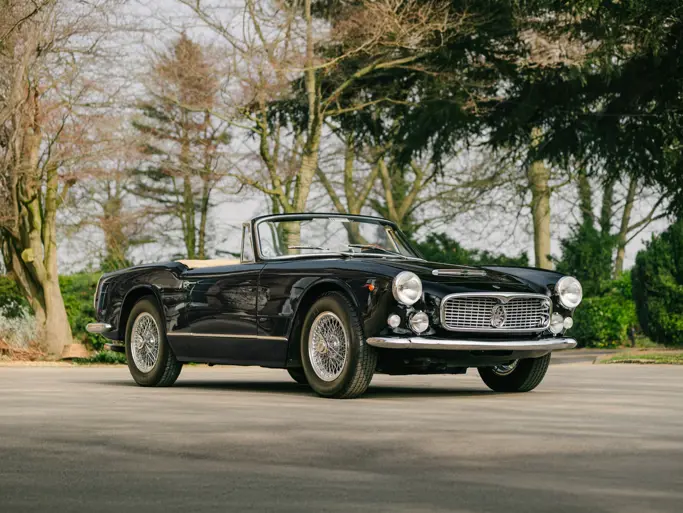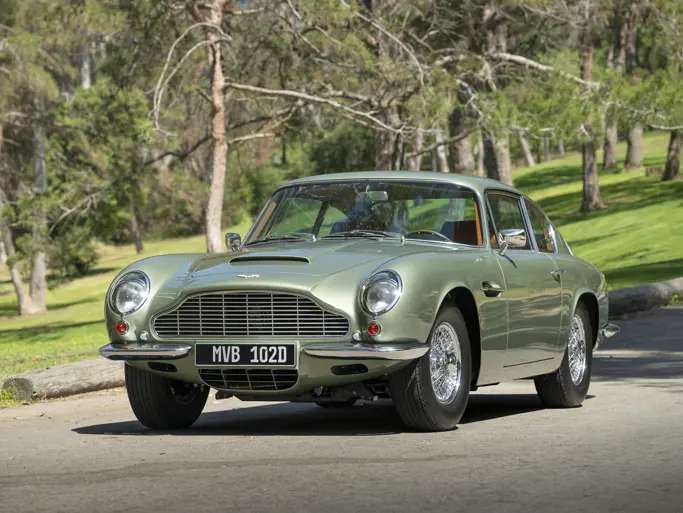
1968 Lamborghini Miura P400 by Bertone
{{lr.item.text}}
CHF1,400,000 - CHF1,600,000 | Not Sold
{{bidding.lot.reserveStatusFormatted}}
- The class-defining first modern supercar
- Powered by a magnificent 4.0-litre V-12 with a five-speed transaxle
- An early “thick chassis” P400, delivered new to Italy
- Fully restored to original specification by marque specialists
The automotive industry has a long history of evolution, interrupted with bursts of innovation. It is hard to imagine the world without the supercar, the pinnacle of automotive engineering married to extraordinary aesthetics. Since the 1960s, supercars have always been the most desirable cars on the road and the first modern supercar was the Lamborghini Miura.
Marcello Gandini was only 27 years old—and recently employed by Bertone—when he penned the lines of the Miura. Commissioned to produce something uncompromising for an equally radical chassis, the body was an extraordinary combination of swooping lines mixed with eyelashes, slats, and cleverly integrated air intakes. Such was Gandini’s fresh thinking that it is almost impossible to find inspiration from earlier cars. Though influence certainly came from Lamborghini’s spirit-animal, with doors modelled on bull horns, creating a wonderful front profile when wide open.
The low-slung monocoque chassis was designed by a 28-year-old engineer called Gian Paolo Dallara, a man who would go on to establish his eponymous company, and develop some of the most successful chassis in motorsport. The Miura was a significant part of his personal development, and his decision to place the engine and transaxle transversely in the rear of the chassis was an utterly brilliant piece of packaging. Previously, the most famous car to use a transverse engine and gearbox setup was the Mini, a front-engine mass produced car of the people, not a car aiming to be the fastest on the planet. The chassis was further complemented by double-wishbone independent suspension with coil-over dampers on all four corners. An anti-roll bar was fitted at the rear to aid the handling, and discs brakes on both axles proved more than capable of slowing down such a ferociously quick car.
Another young engineer involved in this ground-breaking car was Giotto Bizzarrini, still in his late-30s. Following on from his time at Ferrari, where he masterminded the 250 GTO, Bizzarrini founded his own engineering consultancy and designed the V-12 that would be first used in the 350 GT. The design was outstanding, with Lamborghini using the same block design for every V-12 until the all-new Aventador was launched. For the Miura, Bizzarrini’s V-12 design was enlarged to 4.0 litres and fed by four downdraught triple Weber 40 IDLs.
All of these design and engineering features resulted in what became the fastest production car in the world, and one of the most beautiful cars ever made. The birth of the Miura had been unconventional and its release into the world was even more so. The Miura was first shown without its body in rolling chassis form at the 1965 Turin Auto Show with prospective buyers placing orders; they were in for a pleasant surprise when a prototype was finally revealed at the 1966 Geneva Motor Show to astonished crowds. Further development was carried out by 20-somethings, Paolo Stanzani and Bob Wallace. Wallace would famously put development miles on the prototype by driving it from Sant’Agata Bolognese to the 1966 Monaco Grand Prix, practically stopping traffic by parking the Miura outside the Casino for all to admire.
The success of the Miura and its later versions established Lamborghini as one of the preeminent supercar manufacturers, and 762 Miuras were produced in total.
Chassis number 3375 is one of the earliest “thick chassis” P400s, incorporating chassis modifications to improve stiffness and handling. Leaving the factory on 4 March 1968, this Miura has production no. 135. It travelled a short distance to Milan to be delivered to Mr. Bongiasca via Lamborghini dealer Lamborcar. By 1998, this Miura was residing in California, in the care of Donald Sullivan. In early 2009 it appeared for sale and was fitted with a Chevrolet V-8 and a ZF transaxle; it is believed that these were relieved from an unfortunate De Tomaso Mangusta. Soon after this time it was exported to Sweden where the new owner embarked on a restoration, which included installing a correct specification Miura P400 drivetrain, a respray to Verde Miura, and a retrim in Bleu.
During 2015, this Miura was sold to the current owner who commenced another restoration with an Italian workshop. Included in this process was a full bare-metal repaint back to its original colour, Bianco Miura, with an interior retrim in blue and light grey leather. During this restoration the chassis was put on a jig, body repairs were carried out, and the rear subframe was returned to factory configuration. The result of this restoration is a stunning example with outstanding panel shut-lines, worthy of any concours d’elegance.
Presented as a fully restored example of one of Italy’s greatest supercars, this Miura P400 would be a wonderful car for fast road driving or simply admiring as one of the most beautiful cars ever made. The product of a rare moment of youthful exuberance and free-thinking innovation, the effect of the Miura can be seen throughout the history of the supercar, and they will always remain in the collections and on the wish lists of true petrolheads.

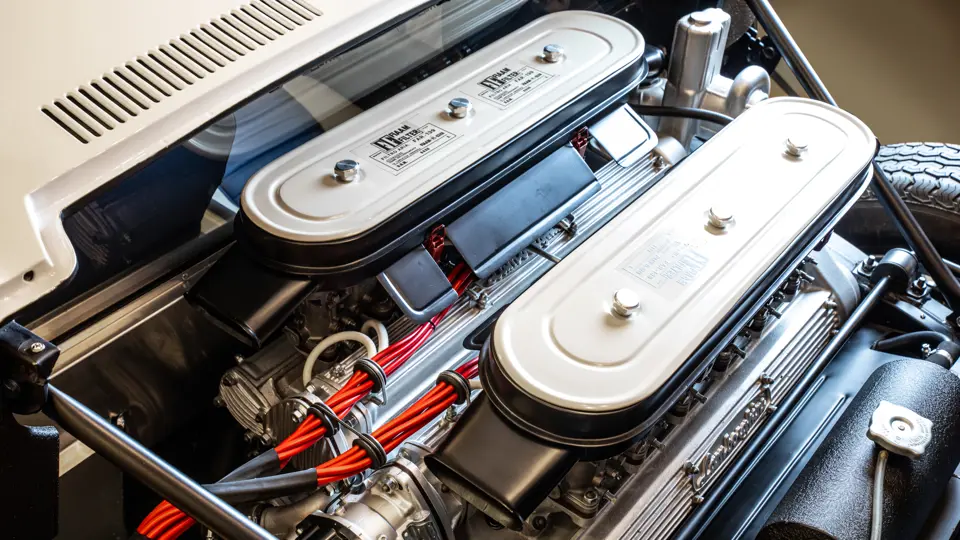


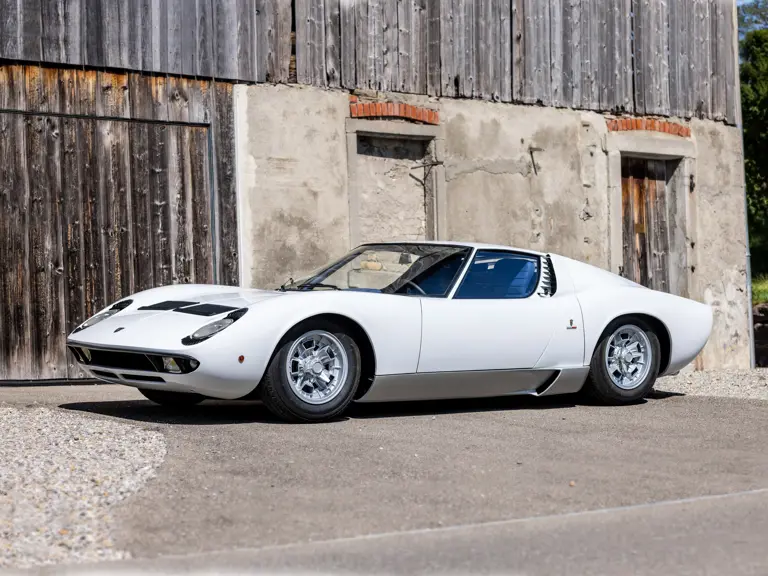

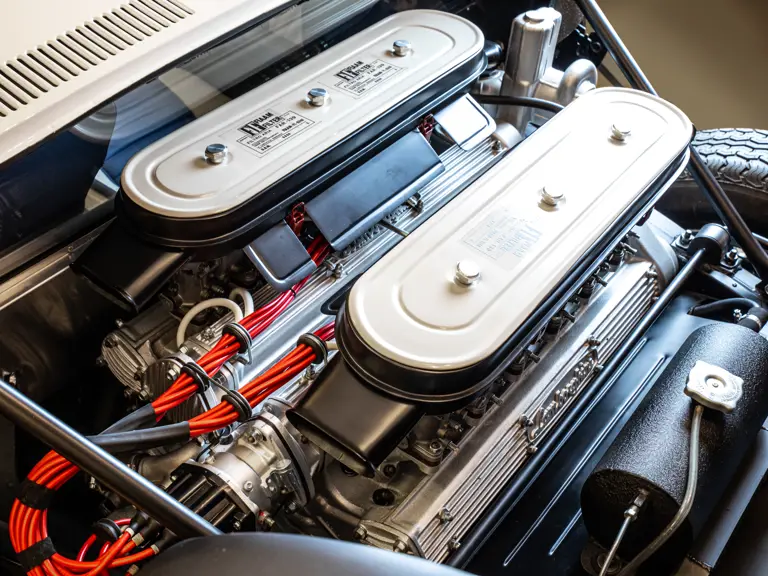
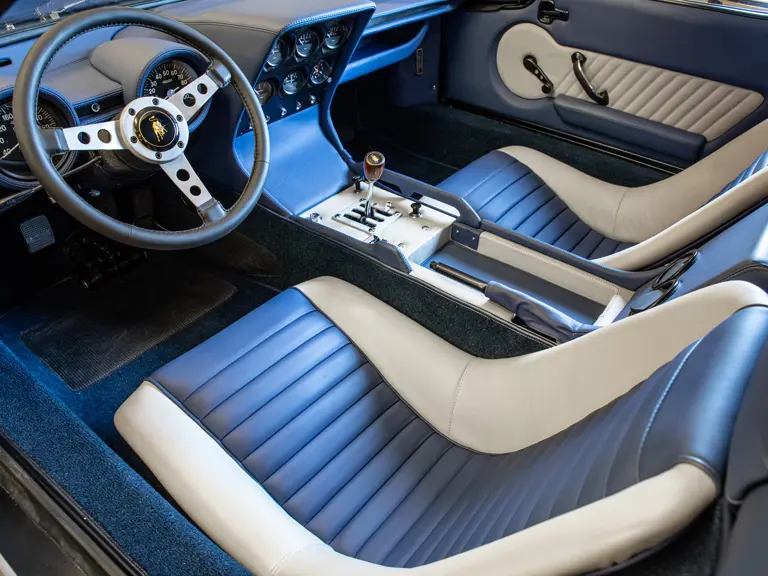
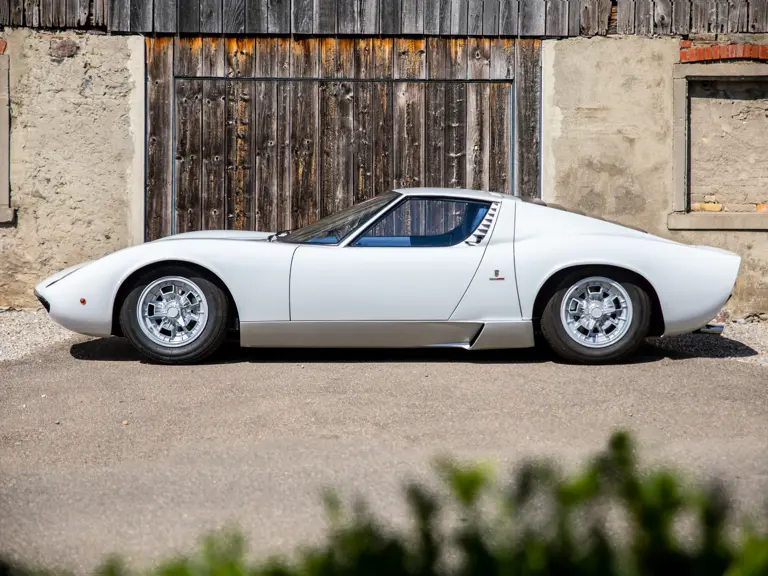
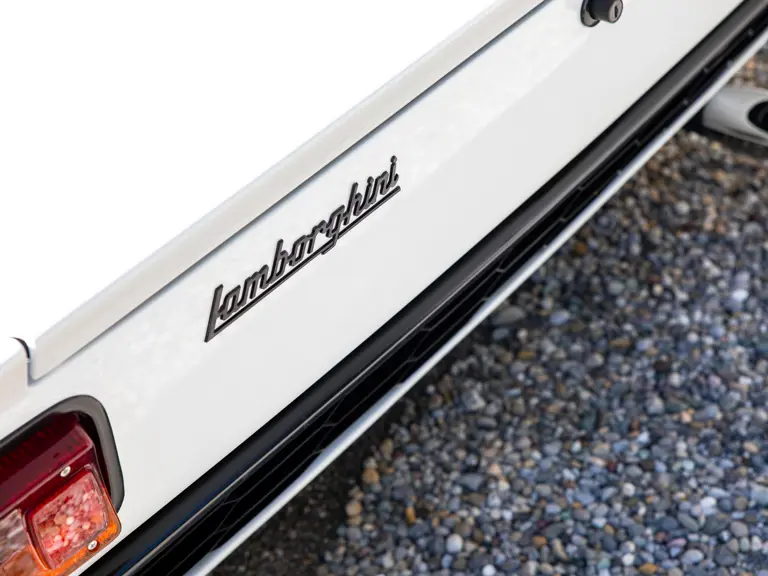
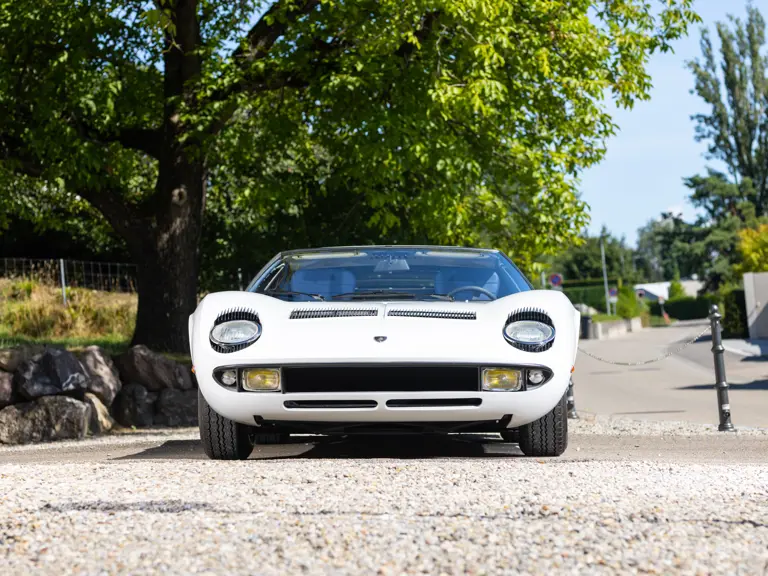
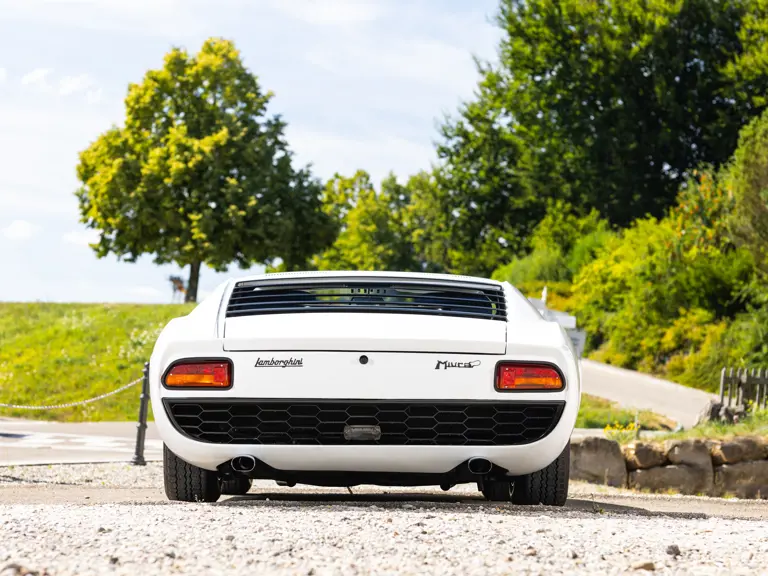
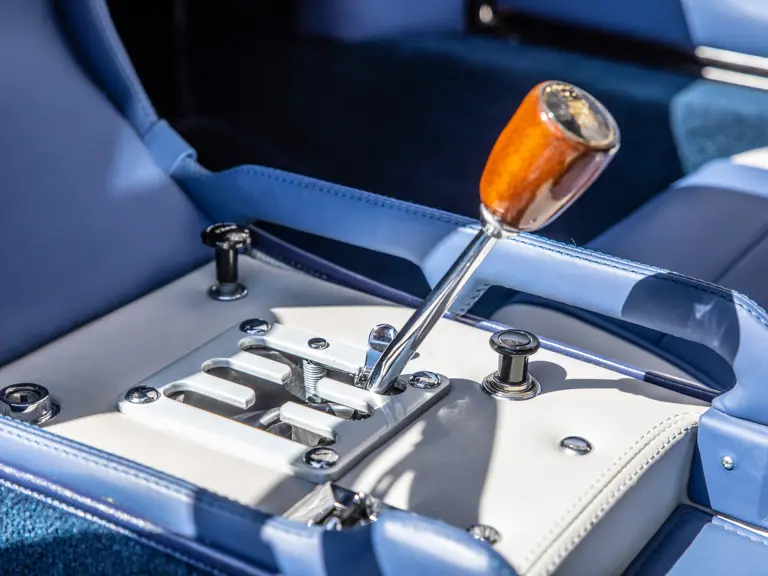
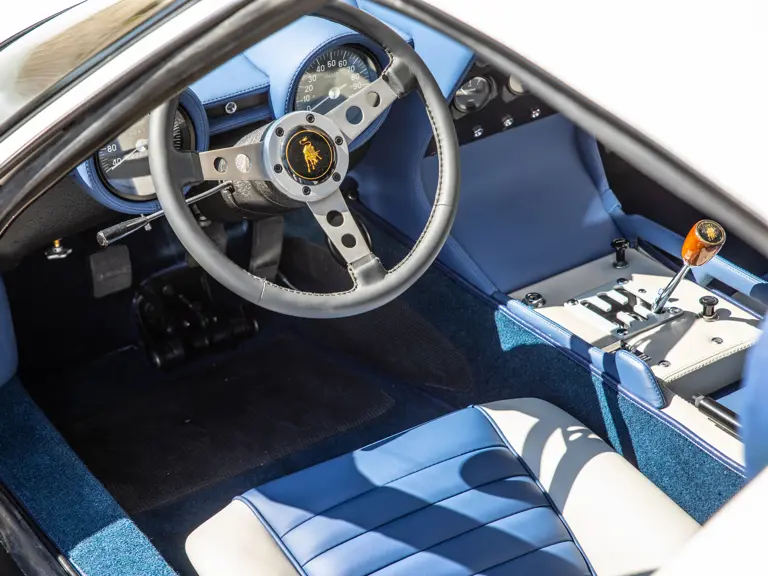
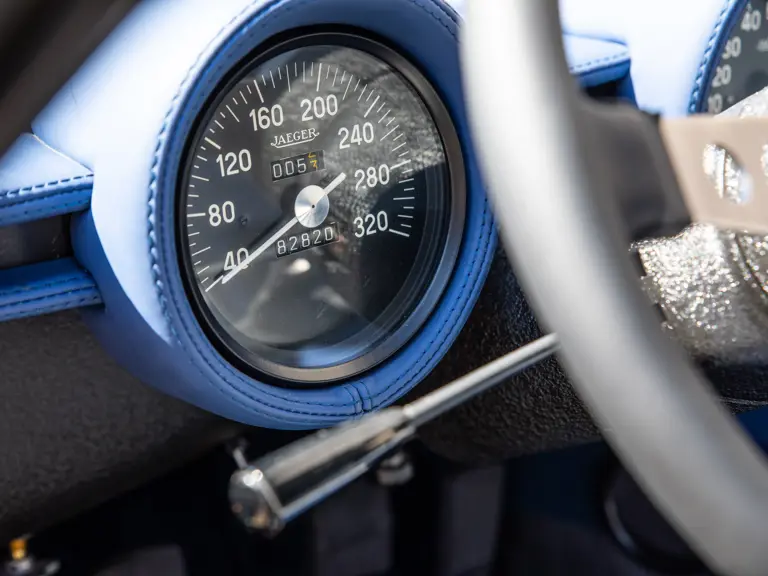
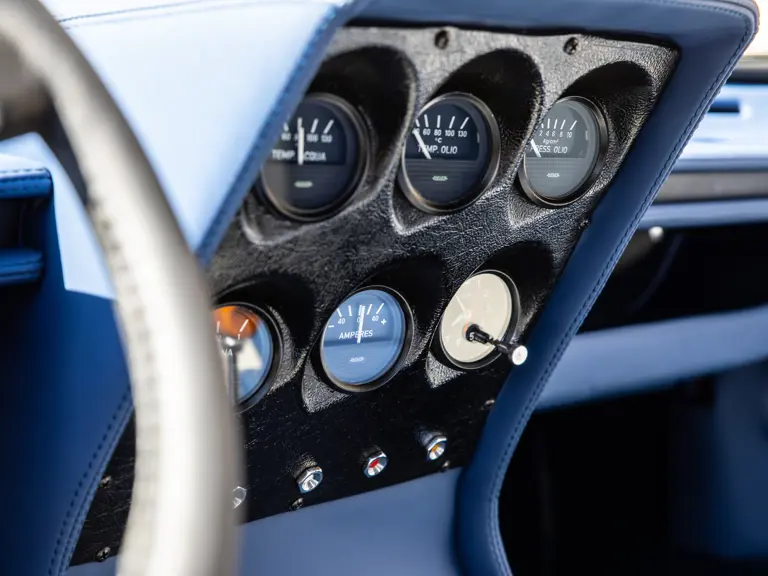
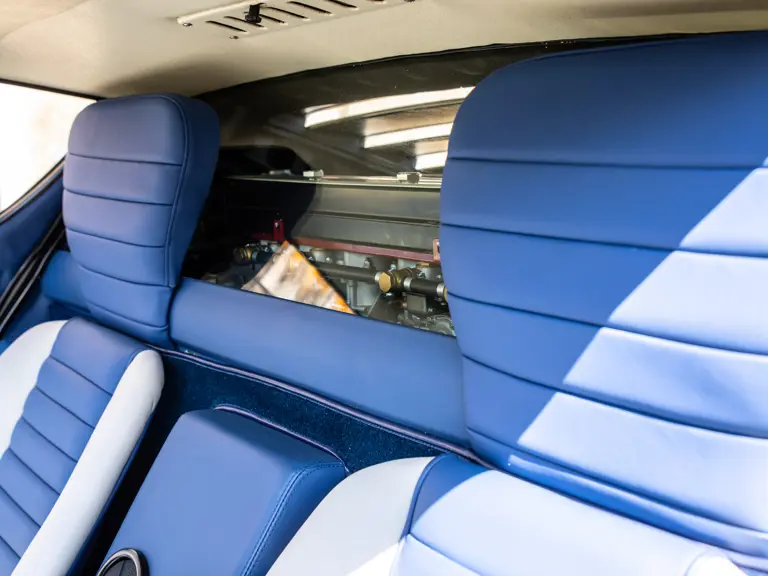

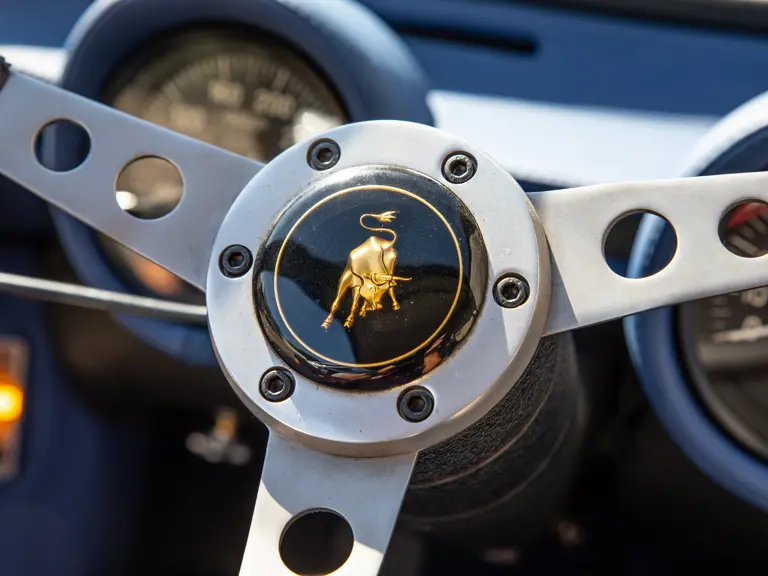

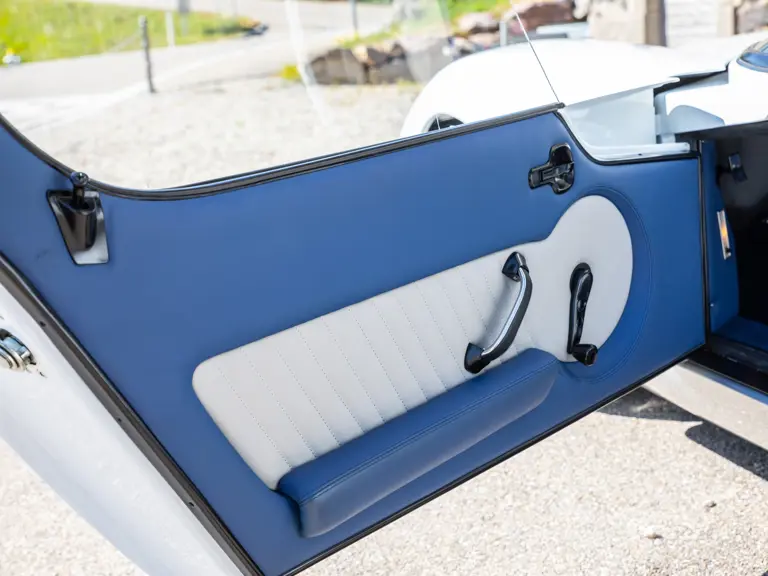
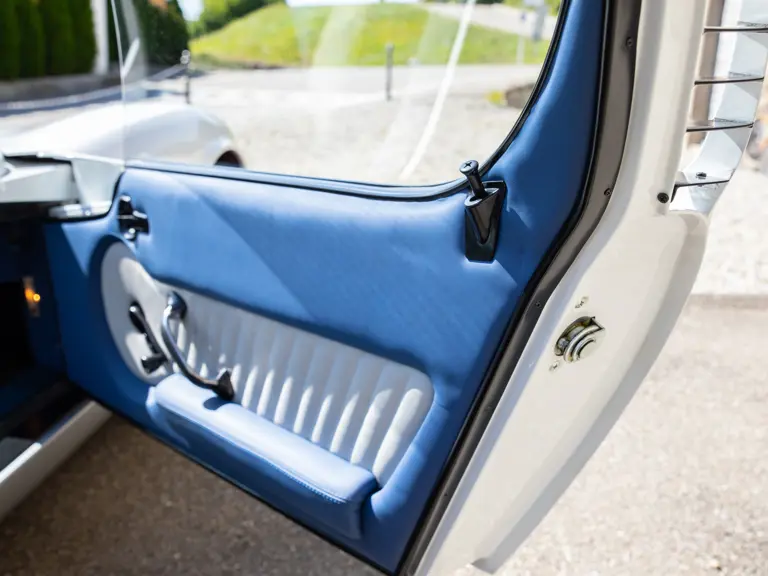
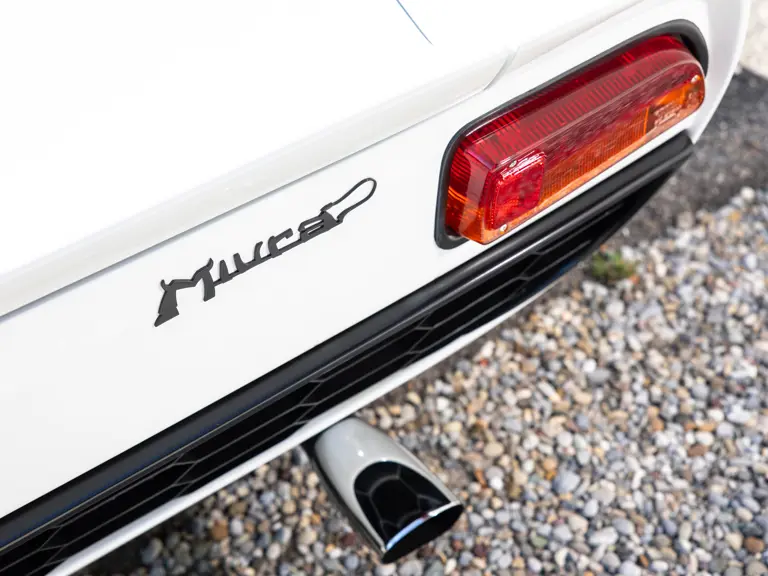
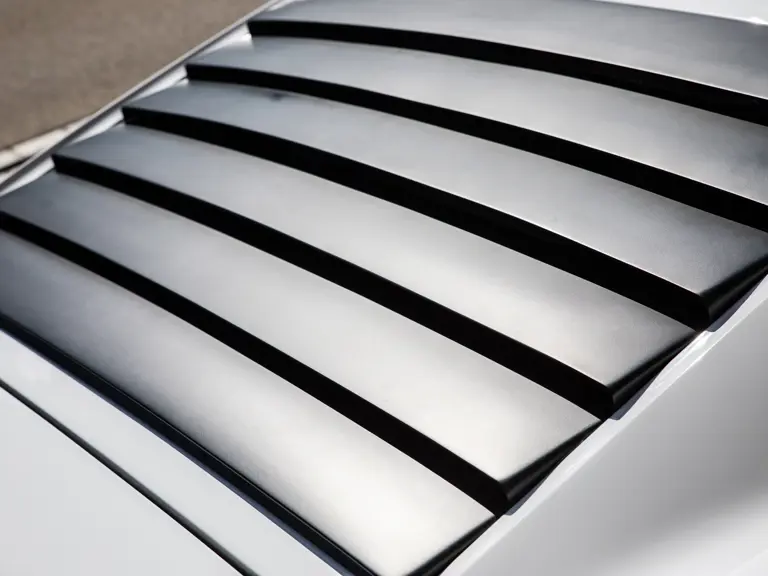
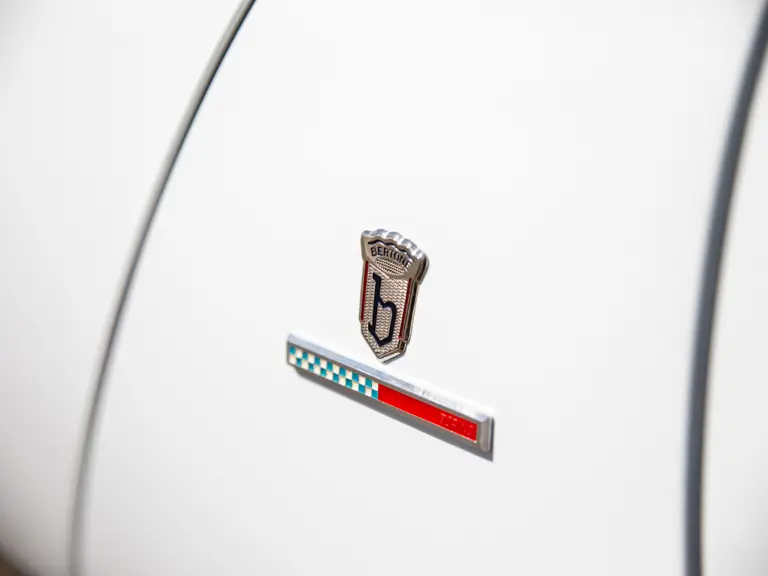
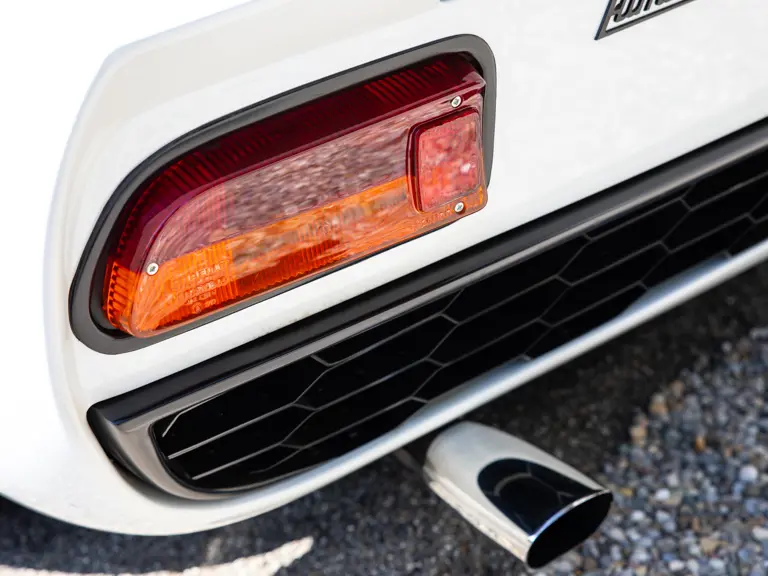
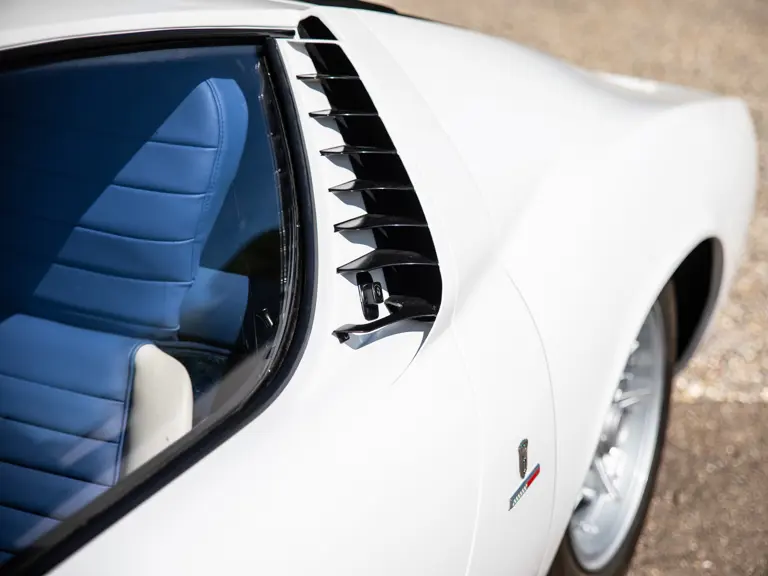
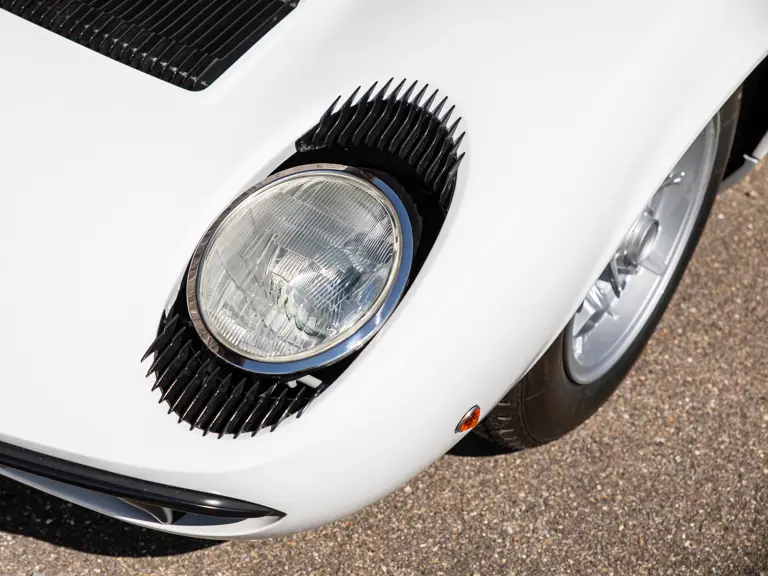
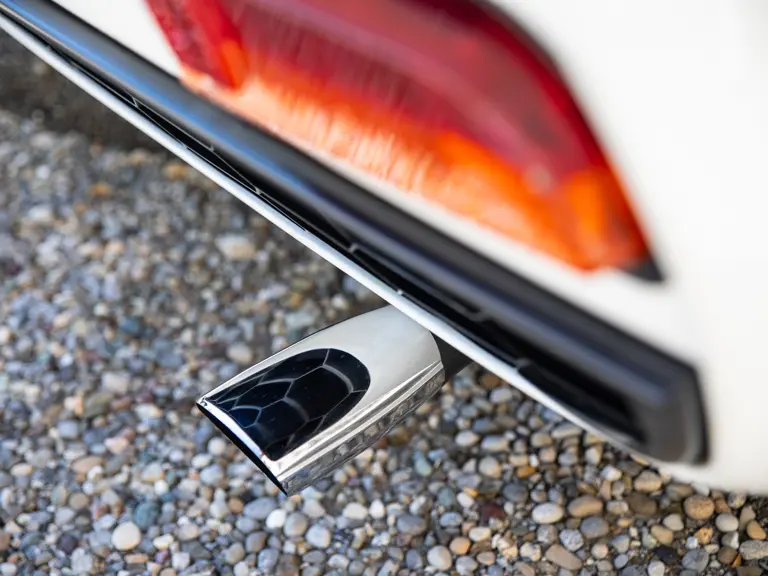
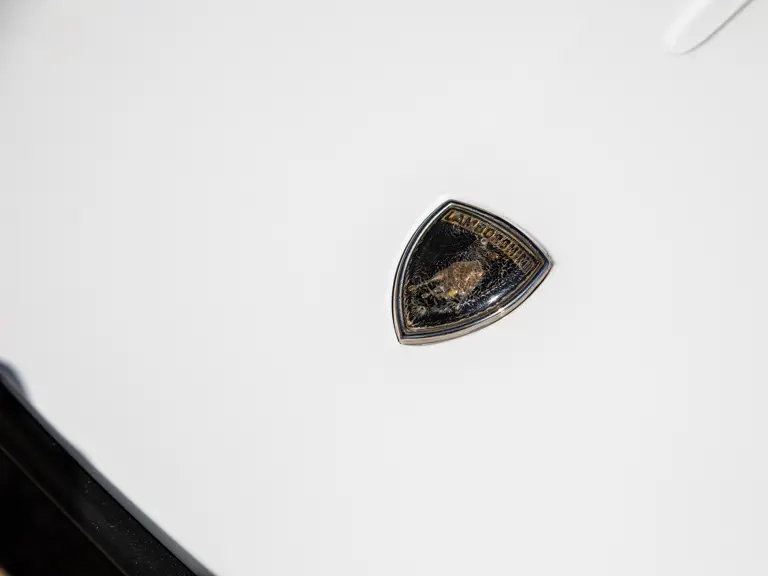
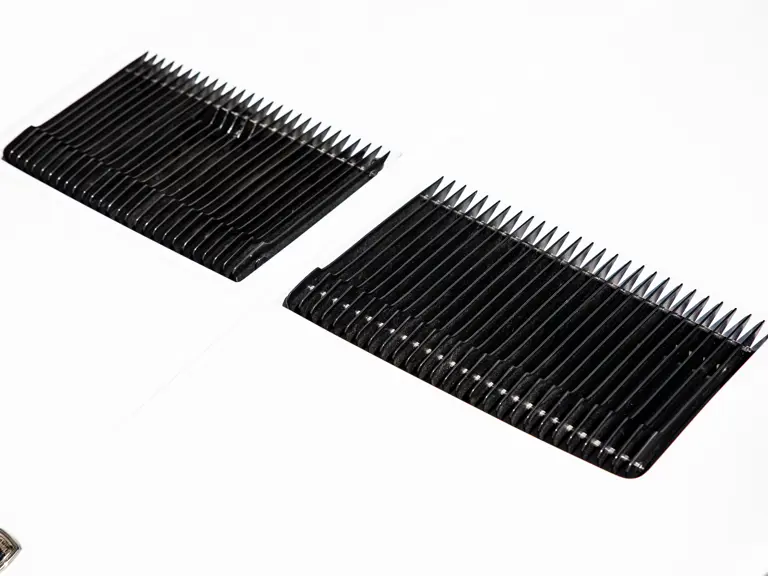
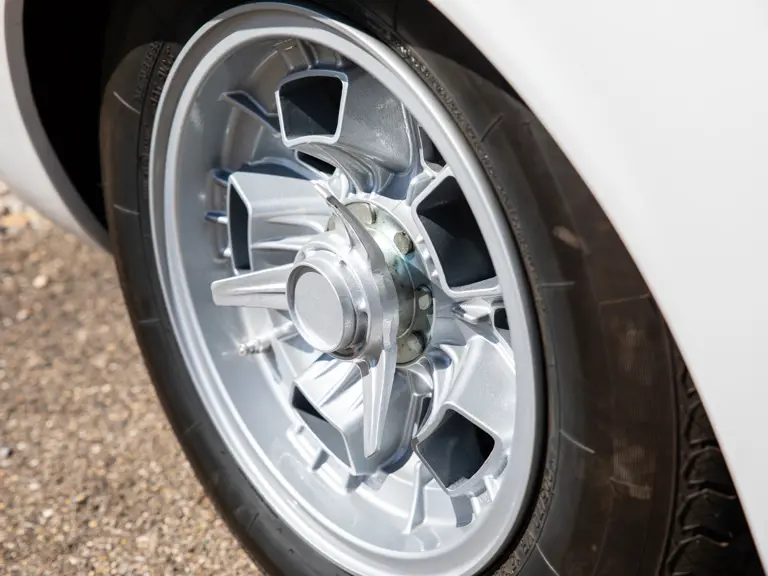
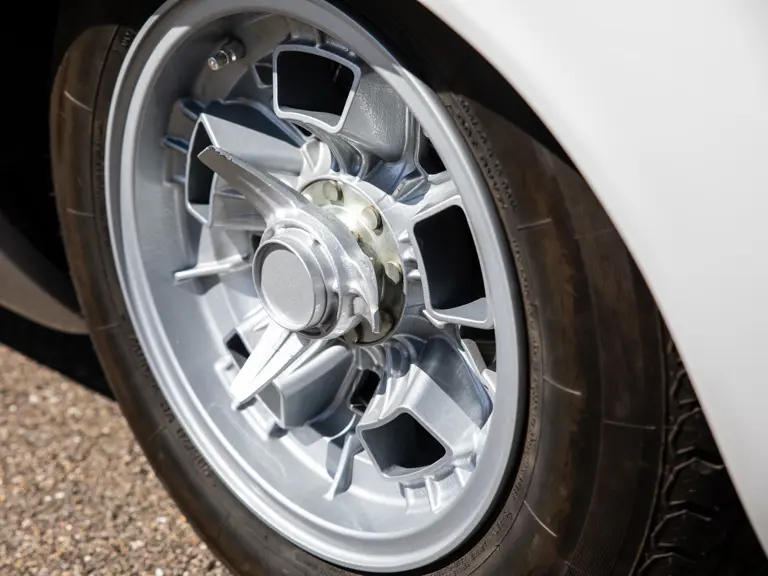
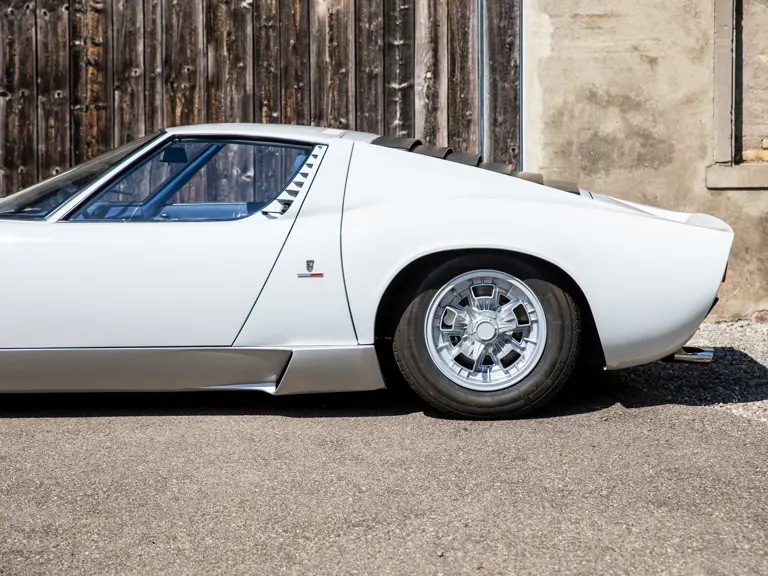

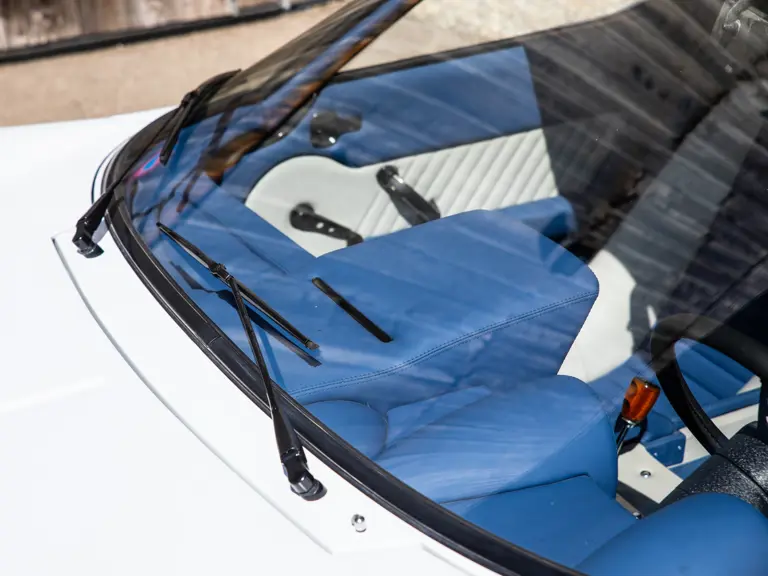
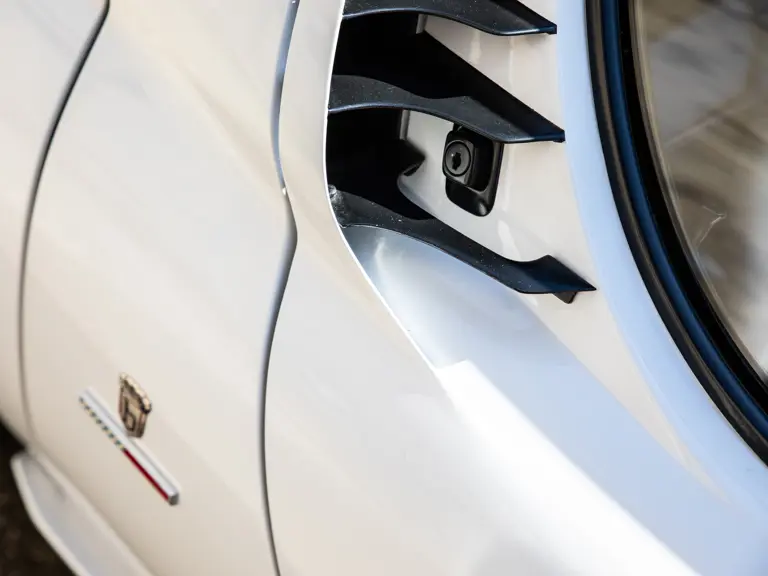
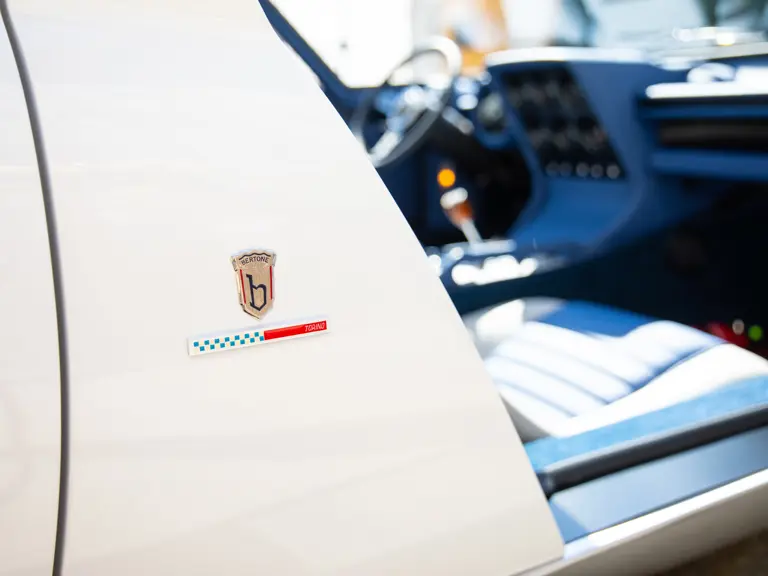
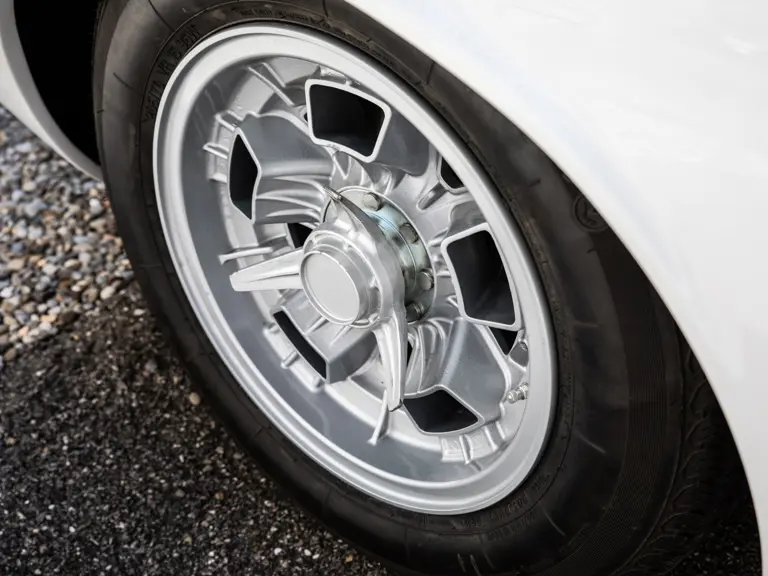

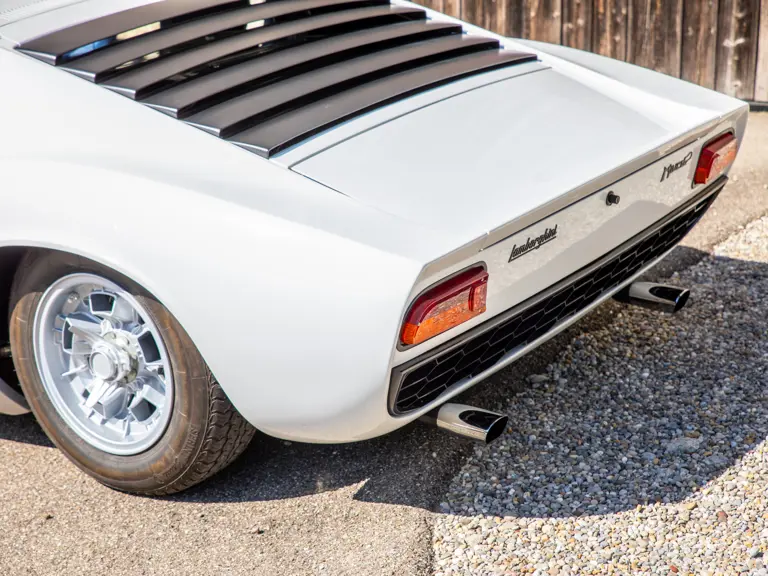
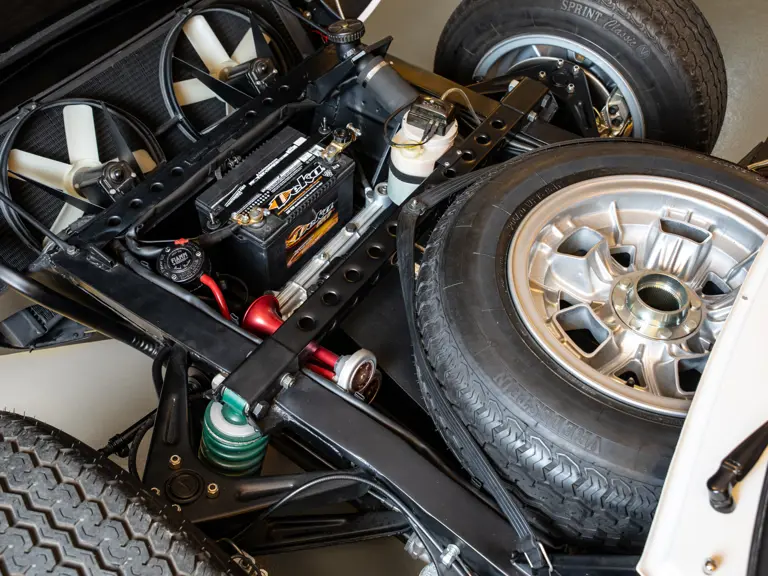
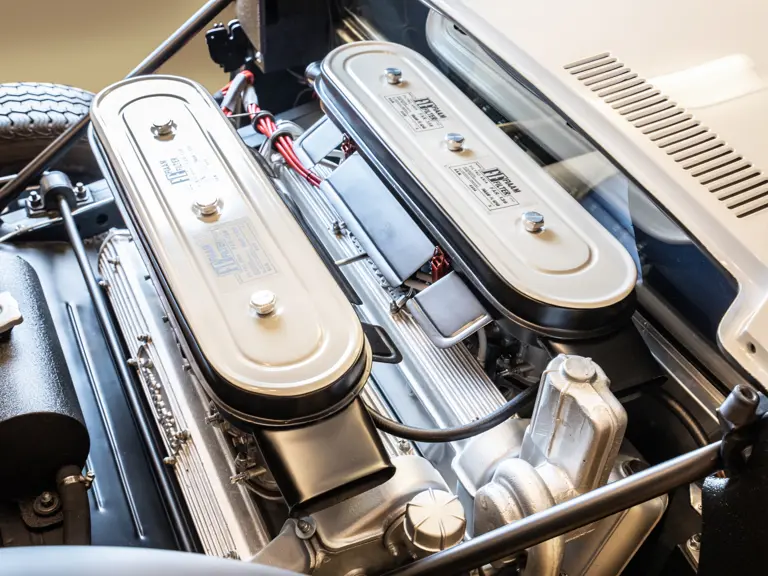
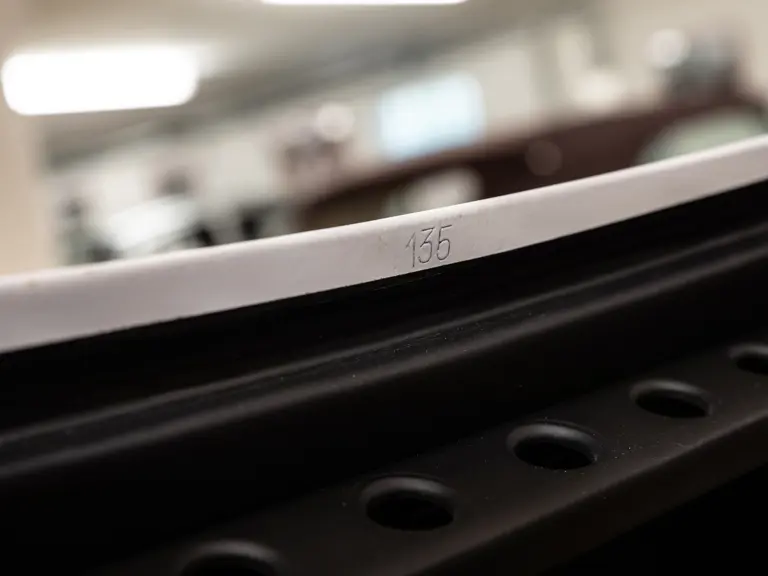
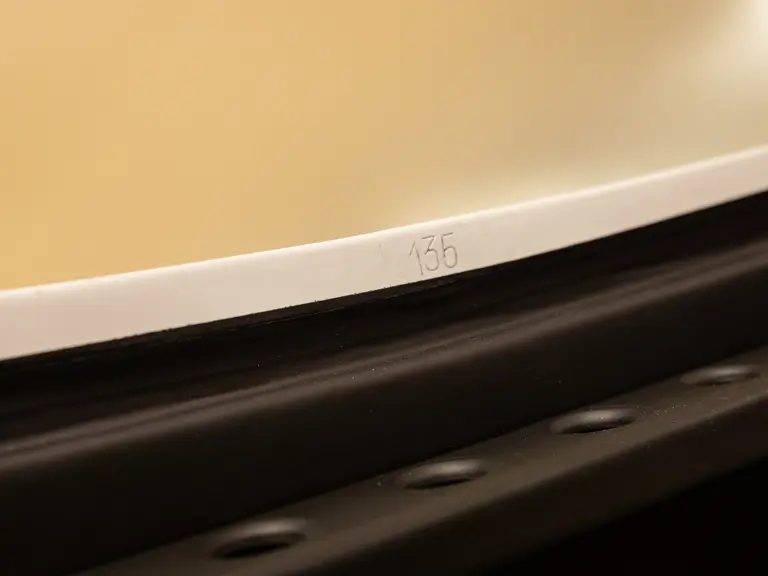
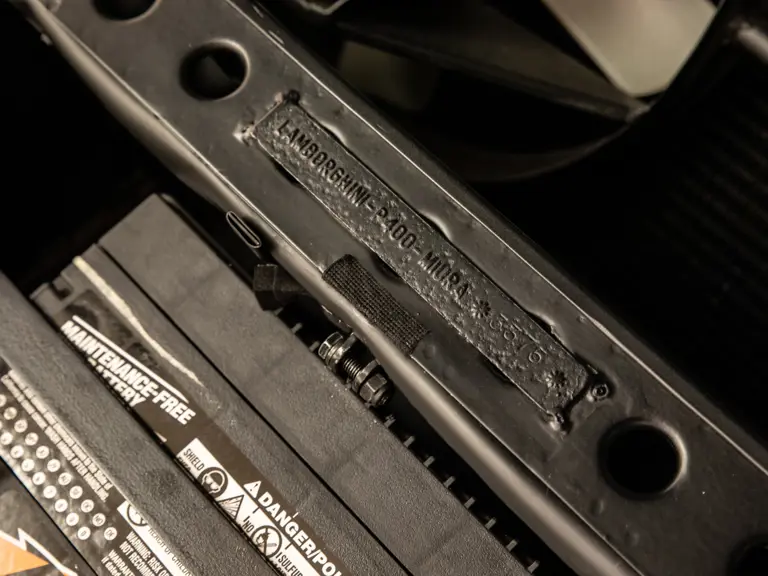
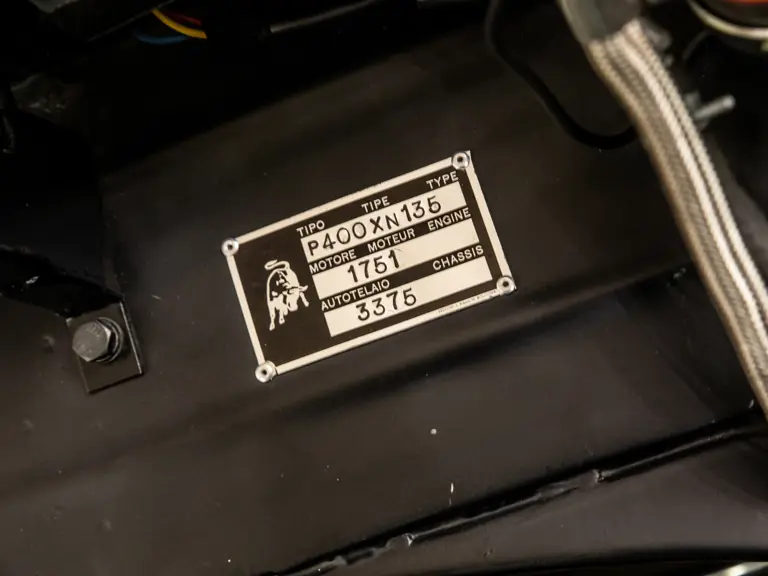
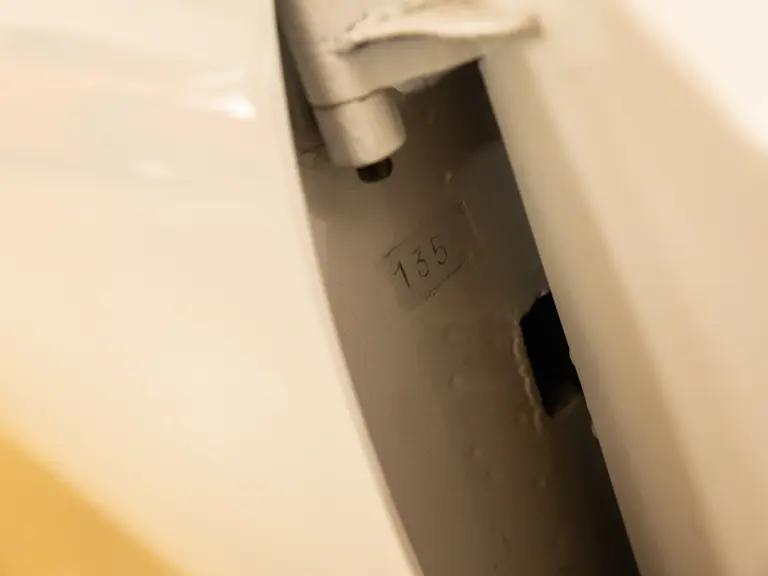
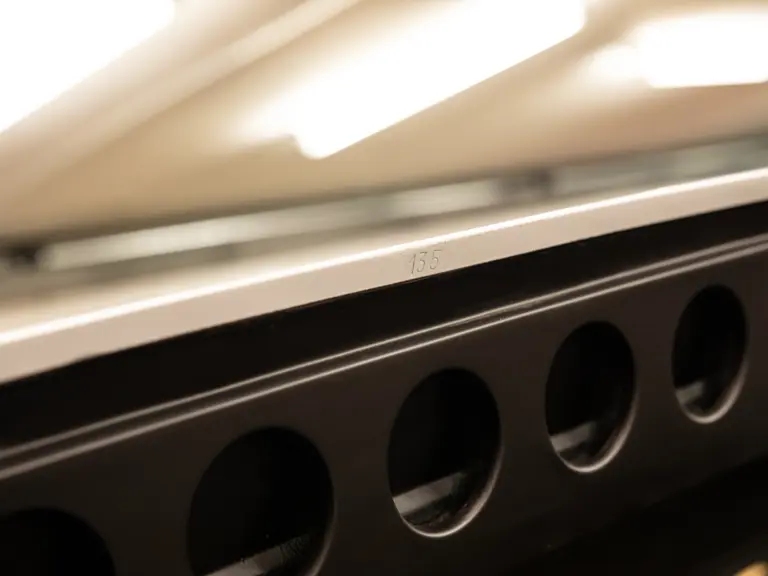
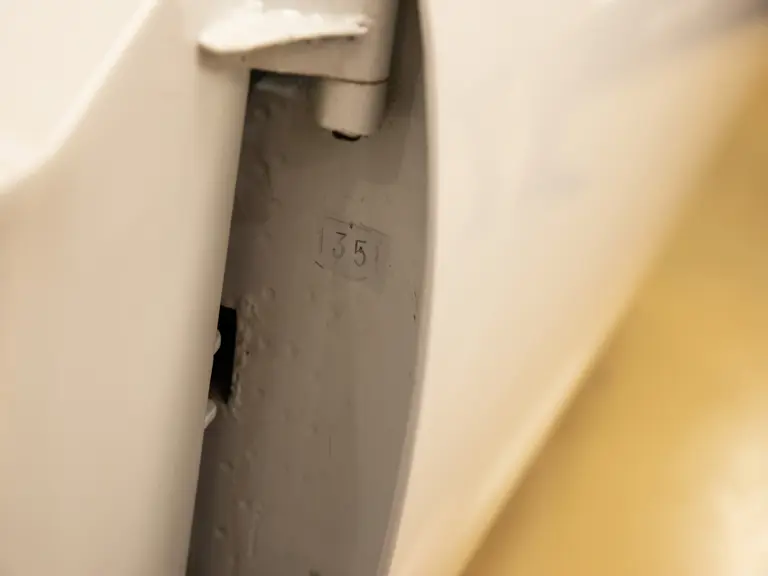
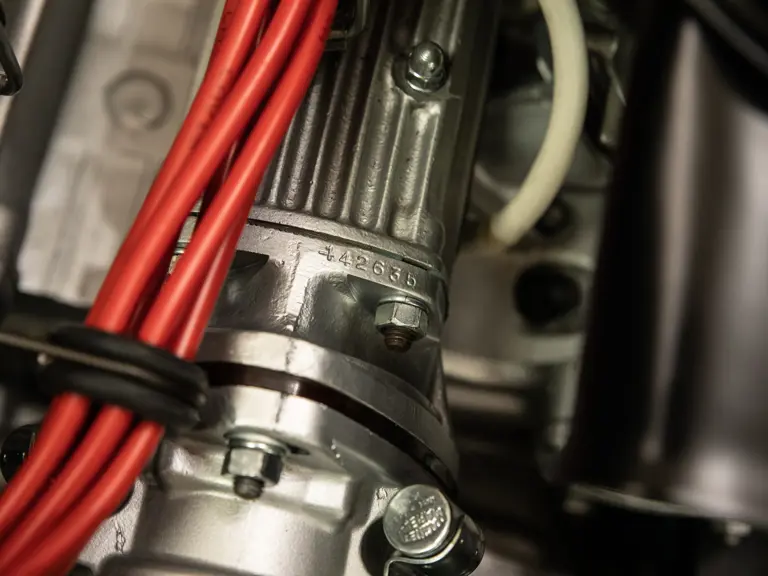
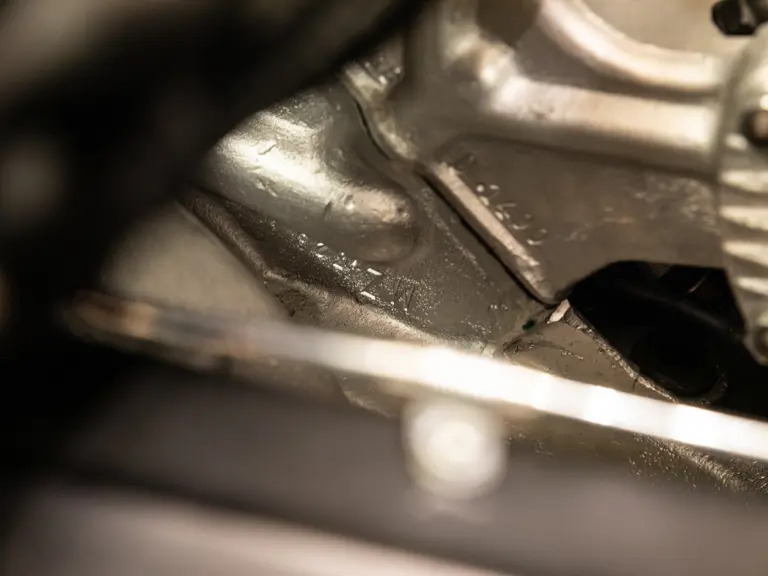
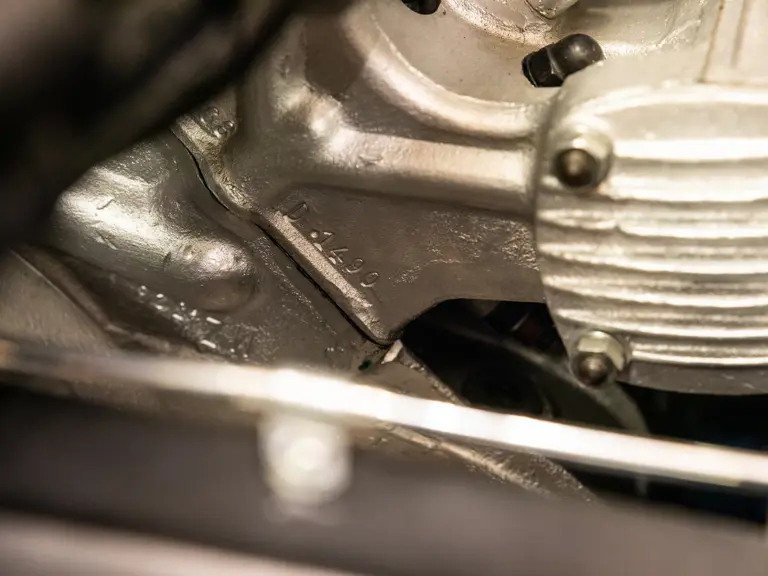
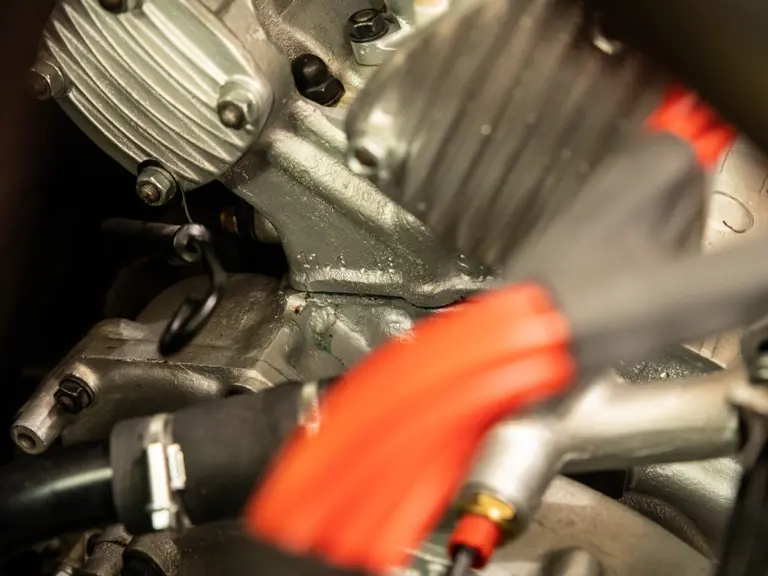
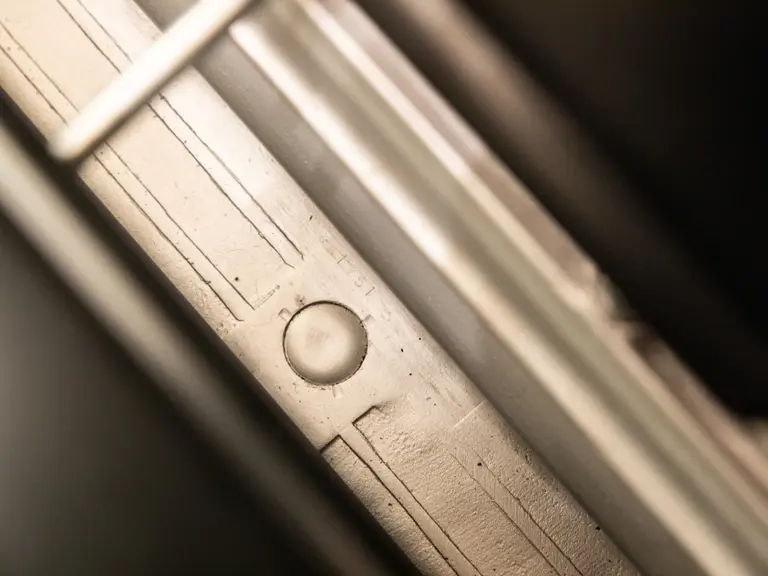
 | St. Moritz, Switzerland
| St. Moritz, Switzerland
